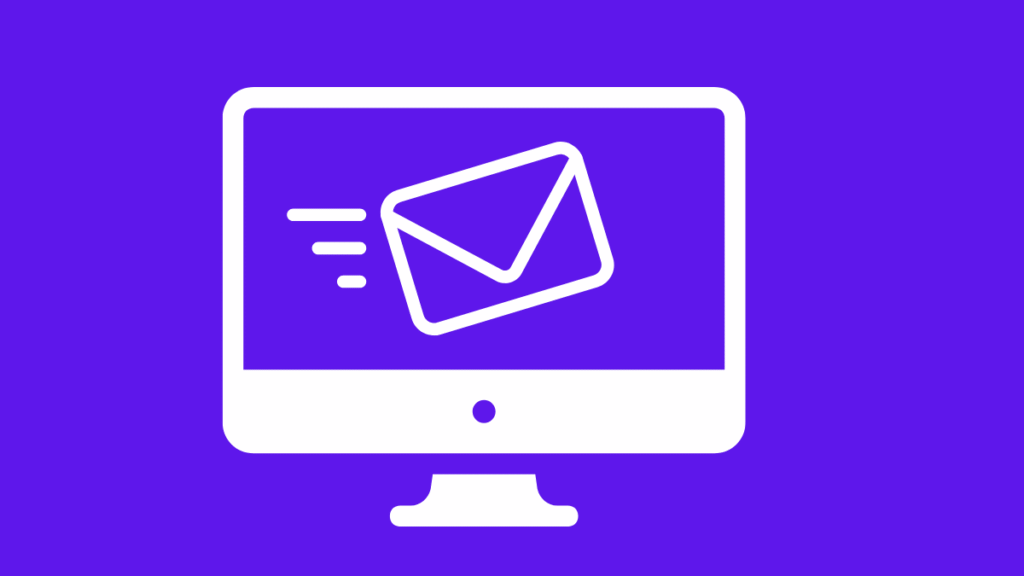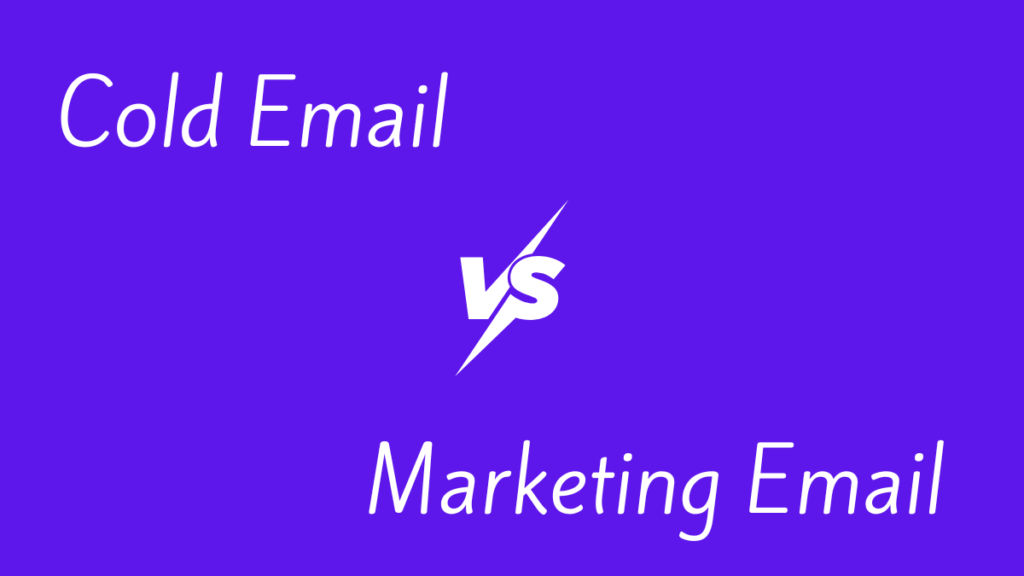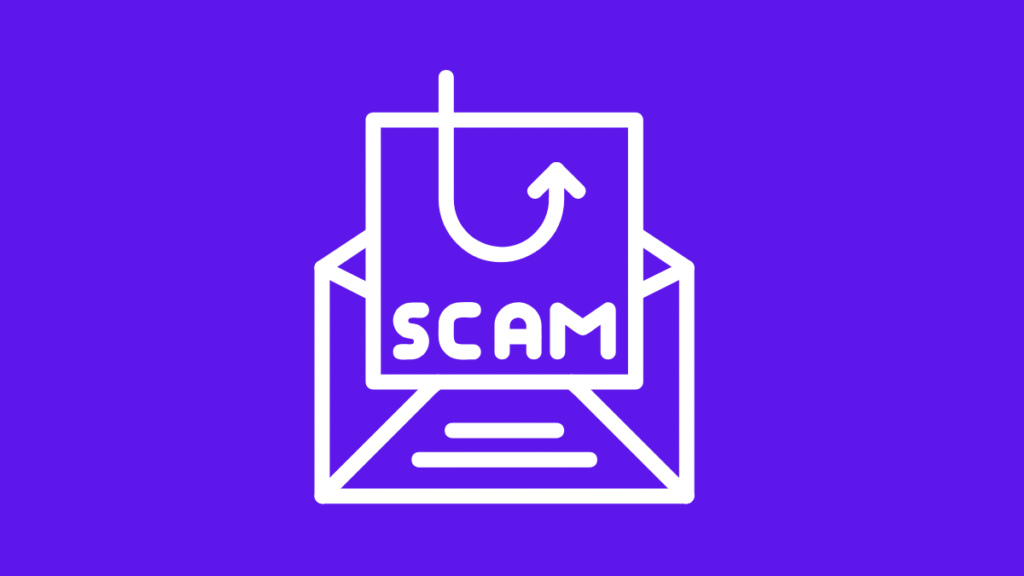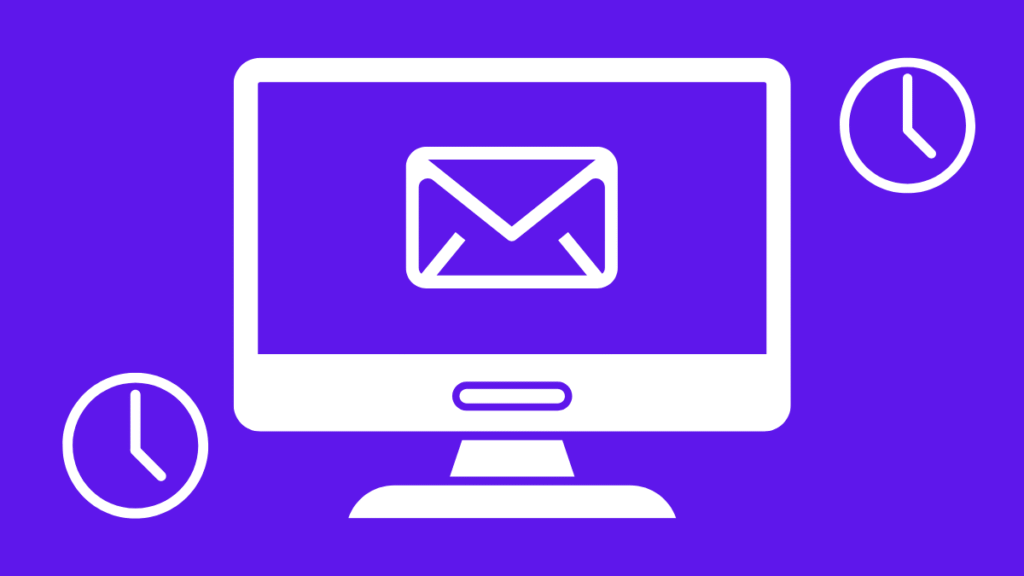The best-performing cold email campaigns use intent signals to spot buying behavior before prospects ever fill out a form.
These signals tell you who’s ready to talk, why they might need your solution, and how to tailor your message to meet them where they are. Here’s a complete list of actionable intent signals, why they matter, and how to use each one in your outreach strategy.
1. Hiring for a Particular Role
Why it Matters: Hiring signals growth or pain, and it shows where their priorities are shifting and what problems they are trying to solve. This is perfect for tailoring your outreach.
Use Case:
- Mention the open role and ask if they need help filling it or tools that make onboarding faster.
- Tie your offer to the department hiring, e.g., if they are hiring SDRs, mention improving outbound efficiency.
2. Finished Hiring a New Role / New Person on the Team
Why it Matters: New hires want to make an impact fast. Reaching out early can position you as the first solution they evaluate or champion internally.
Use Case:
- Congratulate the new hire and offer something that helps them hit the ground running.
- Reach out within their first 30 days; new hires want quick wins and are open to fresh tools.
3. Raising a Funding Round
Why it Matters: Fundraising means future expansion. They are setting plans, evaluating vendors, and preparing for scale, all of which means that this is great timing to start building trust.
Use Case:
- Reach out offering growth-support tools ; marketing, sales ops, or cost-efficiency.
- Offer insights or benchmarks that help them prep for investor conversations.
4. Funding Round Raised
Why it Matters: Fresh capital means fresh budgets. They are likely hiring, upgrading tools, or investing in growth. Be among the first to show them how you can help accelerate that.
Use Case:
- Congratulate them and pitch a way to help them scale faster or smarter.
- If your tool helps with hiring, ops, or infrastructure, frame it as “post-funding readiness.”
5. Onboard onto a New Tool
Why it Matters: New tools bring both excitement and friction. They might need integrations, training, or complementary services; you can be the missing piece.
Use Case:
- Offer to integrate with the new tool or complement its workflow.
- Position your solution as helping them get ROI faster from that new platform.
6. Negative Reviews on G2, Google, Trustpilot
Why it Matters: Bad reviews mean visible pain. It signals frustration, unmet needs, or weak support, all of which are windows for you to offer a better solution or fix.
Use Case:
- Mention the reviews tactfully and offer ways to fix or prevent those issues.
- Share a case study of how another company improved ratings using your product.
7. Leadership Change
Why it Matters: This is when a new CEO, VP, or department head joins, and priorities shift. New leaders often bring new budgets, new vendors, and a willingness to shake things up. Perfect timing to start a fresh conversation.
Use Case:
- Congratulate the new leader and share a short success story relevant to their new role.
- Offer to help them make a strong early impact; new leaders love “quick wins.”
8. Product Launch or Feature Release
Why it Matters: Here, a company just rolled out a new product or feature. Launches usually mean new marketing spend, sales pushes, and supporting tech or services. They are in buying mode.
Use Case:
- Send a message tying your product to supporting their new feature or campaign.
- Congratulate them, then offer data or feedback insights to improve adoption or visibility.
9. Big Change in Website Traffic/Activity
Why it Matters: A big jump or drop in web traffic or ad spend, a spike often signals momentum. A drop might mean they are troubleshooting something. Either way, it is a chance to reach out.
Use Case:
- If traffic spikes, congratulate them and offer analytics or conversion tools.
- If traffic drops, position your product as a performance or visibility boost.
10. Attended a Particular Event
Why it Matters: They just hosted, sponsored, or attended an event or conference. It means they are active, visible, and open to partnerships.
Use Case:
- Reference the event to build common ground, then connect your offer to the theme.
- Mention insights or takeaways from that event to make your outreach relevant.
11. Monitor the News for a Particular Signal
Why it Matters: Their name popped up in the media or industry press. They are already getting attention. Join the conversation while they are top of mind.
Use Case:
- Reference a trending topic about their company or industry in your opener.
- Use that news as context, “Saw the recent update on [topic], does this shift how you’re handling [problem]?”
12. New Regulations/Policies
Why it Matters: A new law or policy has just affected their industry. Regulations create urgency. Companies suddenly need compliance tools, training, or consulting help.
Use Case:
- Mention the regulation and how your tool helps stay compliant or reduce risk.
- Offer a resource or checklist, helpful, not pushy.
13. Track Your Champions
Why it Matters: Your past contact just switched jobs or got promoted. Champions carry trust. When they move, they often bring their favorite vendors and tools with them.
Use Case:
- When a past contact changes jobs, congratulate them and reintroduce your solution.
- Offer help for their new company with a simple “Want to see what worked at [old company]?”
14. Announced New Strategic Partnership
Why it Matters: Partnerships open new doors and create ripple effects. You can position yourself as part of that growing ecosystem.
Use Case:
- Acknowledge the partnership and show how you can strengthen or extend it.
- Mention how your solution fits within that new ecosystem.
15. Featured in Media or PR Story
Why it Matters: It shows momentum, credibility, and pride. A simple outreach message mentioning that can start a valuable chat.
Use Case:
- Congratulate them on the spotlight and relate it to your value, “visibility brings new challenges.”
- Offer a small add-on or insight that helps maintain that momentum.
16. Entering a New Region or Country
Why it Matters: Expansion usually means scaling. They will need new infrastructure, hiring help, and local partnerships.
Use Case:
- Position your product as a launch partner for that new market.
- Offer region-specific insights, contacts, or infrastructure support.
17. Won an Industry or Company Award
Why it Matters: Success brings visibility. You can use that energy to congratulate them and start a conversation while spirits are high.
Use Case:
- Congratulate them and segue into “brands like yours use [tool] to keep that winning streak.”
- Offer a short case study showing how other award-winning companies improved further.
18. Published Customer Success Story
Why it Matters: They are clearly focused on showcasing wins and (probably) open to more of them. You can help them create or fuel the next one.
Use Case:
- Reference the story and tie your outreach to the same goal (growth, retention, etc.).
- Suggest collaborating on the next success story using your tool.
19. Previously Used Your Product/Service
Why it Matters: They already understand the value. All they need is a reminder of why they trusted you in the first place.
Use Case:
- Reconnect with “Thought of you, new features might fit better now.”
- Offer an incentive or discount to return, framed as appreciation for their past trust.
20. Competitor Getting Attention or Traction
Why it Matters: Competitors’ wins often stir up FOMO. You can offer alternatives or show what your solution does better
Use Case:
- Use subtle FOMO: “Saw [competitor] doing X — curious if you’re exploring similar angles.”
- Share how others in their space use your product to stay ahead.
21. Overlap in Clients or Ecosystem
Why it Matters: Shared ecosystems create instant trust, and it is one of the easiest ways to start a warm, relevant conversation.
Use Case:
- Mention shared clients to build credibility — “We both work with [name].”
- Offer a way to collaborate or co-serve mutual customers.
22. Merged with or Acquired Another Firm
Why it Matters: Mergers mean integration chaos, i.e, systems, people, and tools. It is a good time to help them simplify or modernize.
Use Case:
- Frame your offer as simplifying post-merger operations or tool consolidation.
- Offer integrations or transition help to reduce friction between systems.
23. C-suite Sharing Insights Publicly
Why it Matters: They are positioning themselves as thought leaders, and engaging here builds relationships at the top.
Use Case:
- Reference what the exec said in a podcast or post, and relate it to your solution.
- Engage thoughtfully — “Loved your take on [topic]; we help teams operationalize that.”
24. Competitor Win or Loss Revealed
Why it Matters: A loss means pain points. A win means momentum. Either way, you can tailor your approach to fit their current mindset.
Use Case:
- If they lost, offer a path to fix what went wrong.
- If they won, offer support to help them scale the success.
25. Recently Hosted or Promoted Webinar
Why it Matters: This signals they are nurturing leads and investing in awareness. You can align your outreach to that same audience or topic.
Use Case:
- Mention their webinar and connect your tool to that topic.
- Offer to collaborate or provide follow-up content for attendees.
26. Notable Team Member Departures
Why it Matters: Most of the time, turnover signals internal change. They may need outside help or tools to fill gaps fast.
Use Case:
- Reach out to help stabilize operations or fill gaps with your solution.
- If your tool automates tasks, position it as a way to handle reduced staff load.
27. Service Downtime or Reliability Issue
Why it Matters: If they faced a public downtime or outage. The pain is fresh. If your product helps prevent or recover from such issues, then this is your moment.
Use Case:
- Offer reliability or monitoring tools right after the incident.
- Use empathy: “Saw the recent downtime, we help teams prevent repeat issues.”
28. Involved in Lawsuit or Dispute
Why it Matters: Legal stress forces action, and they will most likely be in the market for solutions that restore trust or improve compliance.
Use Case:
- Frame your offer as helping with compliance, risk, or brand recovery.
- Share resources that restore trust with stakeholders or customers.
29. Filed or Granted New Intellectual Property
Why it Matters: Usually, it means innovation is happening, and you can align your outreach around helping them scale or commercialize it.
Use Case:
- Congratulate them and position your offer around protecting or scaling the innovation.
- Offer collaboration or commercialization support.
30. Budget Re-forecast or Missed Targets
Why it Matters: A miss means cost-cutting. A beat means surplus budget. Both open different but strong entry points.
Use Case:
- Offer something that saves cost or improves ROI.
- Frame your message around “doing more with less.”
31. Paused or Reduced Hiring Activity
Why it Matters: A freeze usually means budget shifts or automation needs. You can position your product as a cost-saver.
Use Case:
- Position your product as a way to stay productive with a leaner team.
- Emphasize automation, efficiency, or reduced dependency on headcount.
32. Signed New Distribution Partner
Why it Matters: It signals growth and trust. You can connect to support or co-sell in the new region.
Use Case:
- Congratulate them and offer tools to support expansion or logistics.
- Use it as a bridge: “Many distributors in [industry] use us for [problem].”
33. Vendor Increased Service Cost
Why it Matters: When costs rise, companies shop around. Perfect timing to offer a smarter or cheaper option.
Use Case:
- Reach out as the better or cheaper alternative.
- Offer a comparison or savings estimate to make switching easy.
34. Upcoming Audit or Certification Due
Why it Matters: Deadlines create pressure. If you help with compliance, this is your best trigger for outreach.
Use Case:
- Position your solution as compliance support or audit prep.
- Offer a quick “pre-audit checklist” or consult call to build trust.
35. Switched Payment Provider or System
Why it Matters: Payment changes often hint at scaling, restructuring, or cost optimization. A great chance to align your offer.
Use Case:
- Reach out and tie in your product as a way to improve reliability, reduce fees, or integrate smoothly with their new setup.
- Frame your message around preventing disruption: “Teams that change processors often see [problem]; here’s how others avoided it.”
36. New Locale or Currency Added
Why it Matters: This signals expansion. When companies go global, they face new operational, payment, and localization challenges, and that is where you can step in to help.
Use Case:
- Congratulate them on the expansion and offer a tool or service that helps localize operations (multi-currency billing, translation, regional logistics, etc.)
- Use empathy around growing pains — “Expanding to new regions always brings ops friction. Want a quick audit to spot gaps early?”
37. Status Page Incident Streak
Why it Matters: Consistent incidents scream reliability pain. If your solution improves stability, uptime, or communication, this is your perfect entry point.
Use Case:
- Reference the pattern tactfully: “Noticed a few recent uptime issues; curious if you’re exploring better monitoring or backup systems?”
- Send value first; share a short resource like “3 ways to cut your incident recovery time.” It builds trust before the pitch.
38. Employee Advocacy Spike
Why it Matters: It means morale is high or a new initiative just launched. You can ride that momentum to connect authentically with engaged employees.
Use Case:
- Compliment the team, then segue into something that enhances visibility (content, analytics, social tools).
- Offer partnership: “Your team’s engagement is gold for brand reach. We help companies turn that buzz into measurable leads.”
39. Integration Deprecation
Why it Matters: When a system or integration is deprecated, teams scramble for alternatives. You can position yourself as the smooth replacement or next upgrade.
Use Case:
- Acknowledge the change, then show your product as the fix or smoother alternative.
- Offer migration help: “We can help you transition fast and avoid downtime.” Keep it confident, service-oriented, and urgent.
40. Contract Award / Government Grant
Why it Matters: That win often comes with strict deliverables and deadlines. They will likely be sourcing tools, contractors, or partners to execute quickly.
Use Case:
- Congratulate them. Then offer a product or service that helps them deliver results faster or stay compliant with grant reporting.
- Frame your message around execution — “Winning funding is half the battle. We help teams deliver flawlessly and scale operations without chaos.”
41. Data Breach / Security Incident
Why it Matters: Nothing triggers urgency like a breach. They will be in risk-mitigation mode, looking for anything that improves security, monitoring, or trust.
Use Case:
- Reach out with empathy, not sales, and then offer help around prevention, monitoring, or recovery.
- Share credibility, we’ve helped [similar company] harden their systems post-incident. Would you like a quick walkthrough of how they bounced back?”
42. Customer Complaints on Social
Why it Matters: Public complaints mean real pain points. It is an easy signal to personalize your outreach: “Saw a few users frustrated by X, is that still an issue?”
Use Case:
- Acknowledge gently, e.g, “Noticed a few customer frustrations on social. We help brands turn that feedback into wins.” It’s empathetic and immediately relevant.
- Offer value: “We built a playbook on responding to negative feedback that improved CSAT by 40%. Want a copy?” helps build trust before selling
43. Frequent Job Post Churn
Why it Matters: This usually signals hiring struggles or internal turnover. It opens a conversation about process inefficiencies or a lack of the right tools.
Use Case:
- Acknowledge and reach out, e.g, “saw this [role] pop up a few times, that’s usually a sign of hiring challenges. We help teams attract and retain better talent through [specific solution].”
- Reframe as opportunity: “Hiring gaps often slow projects; we help companies automate [X process] so things don’t stall while hiring.”
44. Annual Report / 10-K Release
Why it Matters: These reports reveal priorities, risks, and next-year goals straight from leadership. They are a goldmine for personalized outreach.
Use Case:
- Mirror a stated priority from the filing and position your solution as the fastest path to that outcome.
- Share a brief proof point or benchmark that maps to those priorities and invite a quick review.
45. Accelerator / Incubator Cohort
Why it Matters: Early-stage companies in accelerators are hungry to grow and open to new tools, mentors, and vendors, a perfect time to engage.
Use Case:
- Acknowledge the milestone and offer launch support that removes early operational friction.
- Provide a simple starter plan or credit to help them test and scale without risk.
46. Company Leadership Changes
Why it Matters: A change in leadership often means new priorities, budget reallocations, and openness to fresh ideas. It’s a window where teams reassess what’s working and what’s not—making it a perfect time to introduce your solution.
Use Case:
- Congratulate the new leader and align your message with their vision or recent public statements.
- Offer a short audit, consultation, or playbook relevant to their goals in the first 90 days.
47. Competitor Tool Usage or Migration
Why it Matters: When a prospect starts using or migrating away from a competitor, it signals dissatisfaction, transition, or openness to alternatives. This is your best chance to position your product as the superior or more stable choice.
Use Case:
- Reference the switch and highlight what makes your solution easier to adopt.
- If they use a rival tool, showcase data or social proof that demonstrates better ROI or support.


 27 Nov 2025
27 Nov 2025
